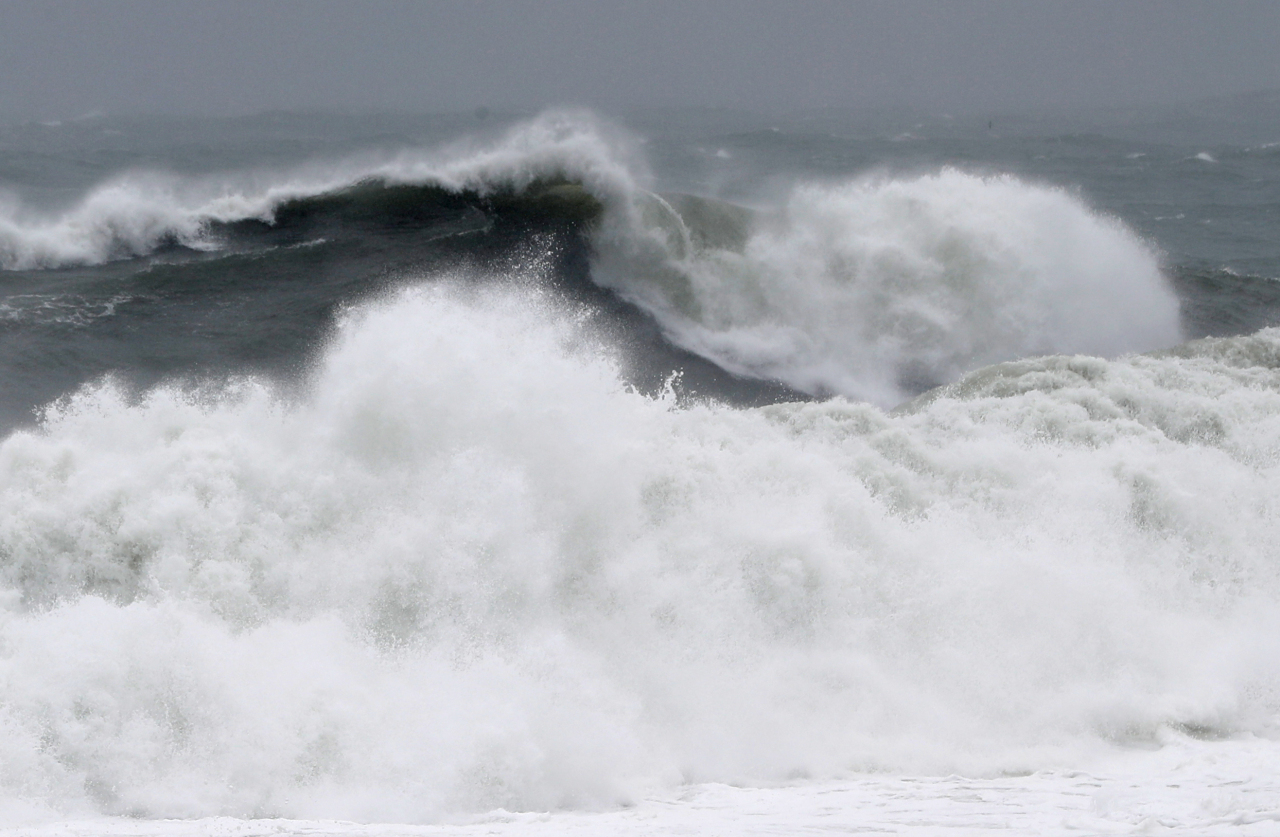
Typhoon Nanmadol, this year’s 14th typhoon, grazed southern and eastern coastal areas of South Korea on Monday, drenching the region with heavy rains and strong winds. But only minor damages were reported.
According to the Korea Meteorological Administration, at 3 p.m. on Monday, Typhoon Nanmadol was moving northeast at around 300 kilometers west of Osaka, Japan at a speed of 33 kilometers per hour, leaving behind the South Korean mainland.
The typhoon became slightly weaker in the afternoon, with a central atmospheric pressure of 980 hectopascals and a maximum wind speed of 29 meters per second, or 104 kilometers per hour.
Typhoon Nanmadol's influence over South Korea was strong in the morning as the typhoon moved north.
At 11 a.m. on Monday, the typhoon was moving northeast about 410 kilometers west of Osaka, Japan at a speed of 20 kph. Typhoon Nanmadol’s central atmospheric pressure then recorded 975 hectopascals, with a maximum wind speed of 32 meters per second, or 115 kph. The typhoon’s center was approximately 210 kilometers from Busan, 210 km from Ulsan and 250 km from Pohang, North Gyeongsang Province, at that time.
Although it did not directly hit South Korea, the typhoon still brought strong winds and heavy rains to southern and eastern coastal areas of the country.
The KMA said the typhoon brought winds with a maximum speed ranging from 15 to 30 meters per second over waters off the eastern part of Gangwon Province and the coastal areas of both South and North Gyeongsang provinces.
Between 5 p.m. on Sunday and 11 a.m. on Monday, Ulsan saw 112 millimeters of precipitation, while Yangyang in Gangwon Province and Busan’s Haeundae saw 107 mm and 86.5 mm of precipitation, respectively.
Typhoon Nanmadol left two injured in Busan, according to the National Fire Agency's Busan office on Monday afternoon.
A total of 831 people from 664 households in South and North Gyeongsang provinces and Busan were also temporarily evacuated from their homes, according to the Ministry of the Interior and Safety's report released at 11 a.m. on Monday.
Power was also out for up to a few hours for hundreds of households in Ulsan between Sunday night and Monday morning.
President Yoon Suk-yeol, who was traveling to the UK to attend the funeral of Queen Elizabeth II, asked Prime Minister Han Duck-soo in a phone conversation on Monday morning to take ample actions to secure the safety of the people.
Yoon asked local governments to take administrative measures, including evacuation orders, whenever they seem to be required to minimize damage from the typhoon.
Han also asked the government and related agencies to remain alert to the typhoon's effects until Tuesday during the Central Disaster and Safety Countermeasures Headquarters’ meeting Monday.
Han added that the Ministry of Trade, Industry and Energy and other related government agencies would thoroughly prepare for possible damage to industrial infrastructure.





